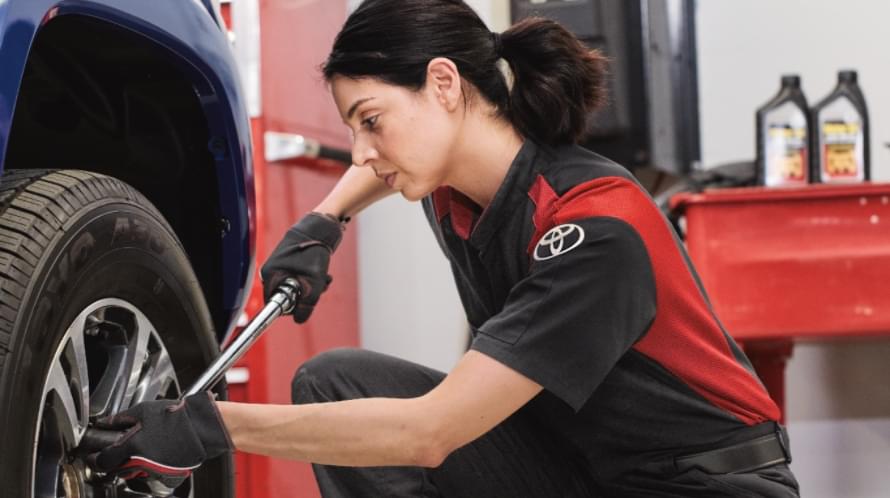No one expects to be in an emergency scenario, especially when behind the wheel. But emergencies can happen anytime, anywhere — so it’s best to be prepared.
When it comes to the unexpected like floods or hurricanes, medical issues and accidents, there are a few things drivers can do to stay ready.
Below are six tips to help drivers prepare their vehicles in case of an emergency situation:
Vehicles Need Checkups, Too
To help prepare for an efficient and safer journey on the road, it’s advised that drivers keep their vehicles in the best possible condition. This means making it a daily habit to inspect for physical damage before getting behind the wheel, and testing tire pressure and transmission fluid once a month.
Additionally, some inspections should be left to the professionals. It’s good to have a certified mechanic check the following annually: antifreeze levels, battery ignition systems, brakes, exhaust systems, fuel and air filters, lights and flashing hazard lights, oil, the thermostat and windshield wiper equipment.
DID YOU KNOW?
Toyota Financial Services (TFS) offers maintenance plans and a variety of products to help keep drivers covered down the road. Visit toyotafinancial.com to learn more about maintenance plans, tire and wheel protection and other options. Also, check out this article from TFS for tips and helpful info about when natural disasters strike.

Never Forget About Gas
After a long day, it can be tempting to bypass the pump and push off getting gas until the next day. Instead, consider always keeping the gas tank at least halfway full. According to emergency preparedness experts, during an unexpected event like a natural disaster, an entire region can be trying to evacuate the same area at once, increasing the chances of a gas shortage or high prices. With half a tank of gas, drivers can get going right away and fuel up later down the road.
Another thing to consider: Carry cash. According to disaster relief organization SBP, cash is king during an emergency. In times of disaster, cash may be the only currency readily accepted at gas stations or while gathering other last-minute provisions.
Build an On-the-Go Emergency Supply Kit
Since drivers will never know what might come in handy during a breakdown, why not keep an emergency supply kit ready to go in the vehicle? A fully stocked kit could be a big help when something unexpected occurs, no matter if drivers are on a big road trip or just commuting to work.
Here are some things to consider including: first aid kit, jumper cables, spare tire, floor jacks, tow cables, traction devices, emergency navigation gear or map, compass, flashlight and batteries, reflective emergency triangles, multi-tool device and a shovel. Don’t forget to review what’s in the kit about every six months to check for missing or broken items or anything past the expiration date.
An Escape Tool Can Help Save Lives
Automotive escape tools are always a good thing to keep in the vehicle. These multifunctional tools can be used to cut through seat belts and break the glass of windows from inside the vehicle. This can be helpful if a person gets stuck in a vehicle or if the vehicle falls into a body of water.
The best place to keep this type of tool is in the center console or glove compartment for easy access. Inform all possible drivers of a vehicle — and the passengers —where this tool is, just in case.

Anyone Out There?
In an emergency, being able to reach out for help is critical. Travel with a cell phone — and don’t forget the charger! Keep in mind, however, that during a large-scale disaster, cellular networks will most likely be inaccessible. This means it may be helpful to own a ham radio, or if affordable, a satellite phone.
Another tip from SBP: Write out a contact list. With cellular networks potentially down during a disaster, drivers may not be able to rely on their phone’s contact app. It’s also a good idea to back up important documents to a cloud service and to consider writing down the name and number of a good towing company.
Watch the Weather
When preparing a vehicle to stay ready for a disaster, keep the seasons in mind. During a breakdown, a vehicle’s heating or air conditioning system will most likely not work. If there’s a long wait for a tow truck, keeping passengers warm or cool may become a priority.
After assembling an emergency kit, consider adding additional items like a change of clothes, water, nonperishable foods and blankets. In cold weather, make sure to have an ice scraper or snow brush, extra washer fluid and a small bag of cat litter or sand to create better tire traction in slippery conditions.
